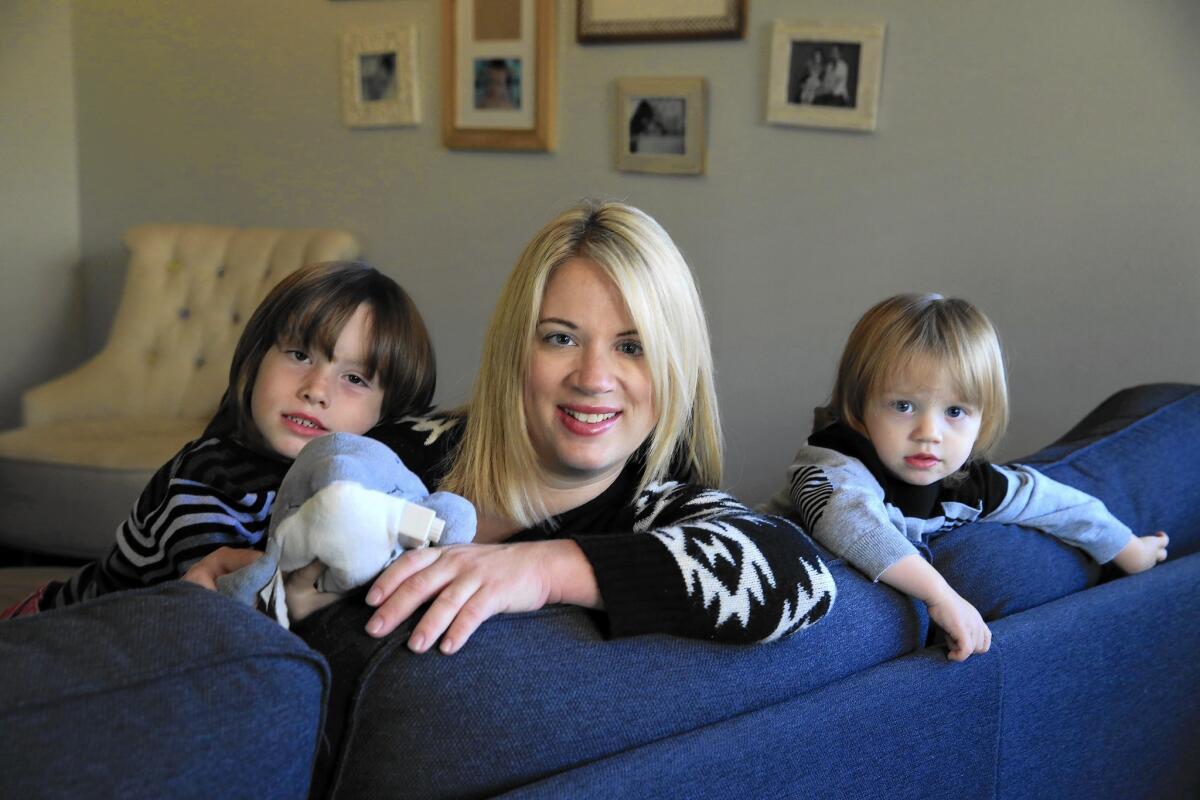How to avoid the risks and costs of unneeded C-sections

On Danica McCluer’s last appointment before the due date of her first child, her doctor said measurements showed her baby was likely to be big. Instead of her having a natural birth, as McCluer had hoped, her doctor insisted that she undergo surgery and deliver the baby by caesarean section.
“I was really upset about it. I didn’t want a C-section,” says the 35-year-old mother of two from Costa Mesa. “I wish I had been given a chance to at least try to go into labor.”
Five years later and another child also born by caesarean, McCluer says she believes that the procedure may not have been necessary: “It was just more convenient for the doctor, honestly.”
Caesarean birth is the surgical operation for delivering a baby by cutting through the mother’s abdomen and uterus. According to research, caesareans are clinically necessary in an estimated 15% of births, yet 33% of all women — both in California and nationally — deliver their baby this way.
The rate of caesareans for first-time mothers has shot up since 1997 and is higher than it should be, experts say. Typically, the procedure is more expensive, which is one reason that experts say rates may be higher than necessary. The average total charges for care for caesarean births are about $51,000, compared with $30,000 for vaginal delivery, according to a 2013 report by Truven Health Analytics.
Because these deliveries cost about 50% more than vaginal births, there are financial incentives, particularly for hospitals, to perform these pricier deliveries.
But that’s not what drives most doctors, says Dr. Aaron B. Caughey, a spokesman for the American Congress of Obstetricians and Gynecologists and chair of the department of Obstetrics & Gynecology at Oregon Health & Science University.
Like most experts, Caughey agrees that caesareans for low-risk women are overused, but says doctors aren’t performing them with a bigger payday in mind.
“The economics aren’t as simple and driven in one direction as you’d think,” he said. “It’s more about risk tolerance and about time and the ability to schedule things much more than the money.”
Also at play is a persistent belief that despite greater costs and risks of complications for mothers, delivering a baby surgically is the safer option.
“A single C-section can be relatively safe, and we do thousands and thousands of them every year in California,” says Dr. Elliott Main, medical director of the California Maternal Quality Care Collaborative in San Francisco.
But he adds, “It’s still major surgery,” which increases the risk of complications for both mothers and babies.
What’s more, once you’ve had one caesarean, you’re likely to have another with future pregnancies.
“Once we do that first C-section, the chances you’re going to have a subsequent C-section is much, much higher — over 90%,” Caughey says.
Experts point out some key ways of avoiding both the risks and costs of unnecessary caesareans.
Choose your hospital carefully. There is a huge variation in the rate of caesareans performed among California hospitals; the largest spread is in the Los Angeles area, says a report from the Pacific Business Group on Health.
Los Angeles Community Hospital in East L.A. had the highest rate in 2013 in the county with nearly 69% for first-time mothers with no clear risk requiring surgical delivery. The lowest was at Henry Mayo Newhall Memorial Hospital in Valencia with 19.5%.
“This really tells us that a women’s risk for a C-section depends in large part where she decides to have a baby,” says Brynn Rubinstein, senior manager of the Pacific Business Group’s Transforming Maternity Care program.
The group is a business coalition focused on reducing the cost of healthcare. Among its many initiatives, it works to drive down maternity costs by reducing the rate of low-risk caesarean sections.
It’s a good idea to discuss your desires for your delivery with your provider early in your pregnancy and to understand your options.
“If women were really educated about the risk of C-section … I think many would choose to wait” before deciding on surgery, Rubinstein says.
Ask about C-section rates. It’s a good idea to check the rate of caesarean sections at the hospital where you plan to deliver — and those of your obstetrician.
California hospital caesarean section rates can be found at CalQualityCare.org. You can also check a hospital’s rates at the Pacific Business Group on Health. The group also has several valuable links on its website.
Even more important, experts say, is to check with your doctor to see how often he or she delivers babies by caesarean section.
According to Main, if you’re a first-time mom, you want to ask about the physician’s rates among women with no risk factors delivering for the first time. There are also rates for physicians delivering babies vaginally after a woman has had a previous C-section. These rates can also be found on an extensive nationwide physician-search website called Amino.com.
Discuss procedures that can increase your chances of a C-section. Certain tests and procedures commonly used during labor and delivery can inadvertently lead to unneeded C-sections.
A list of common procedures to watch for during pregnancy is discussed by Consumer Reports.
McCluer, the Costa Mesa mother, is now pregnant with her third child, and she is hoping to avoid another C-section. She says she is better prepared when it comes time to decide. “I’ve learned not to let myself be talked into anything.”
Twitter: @lisazamosky






